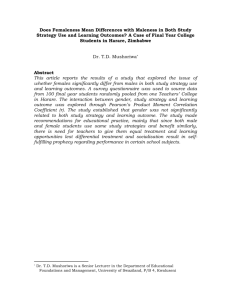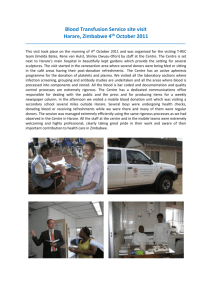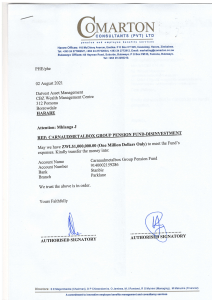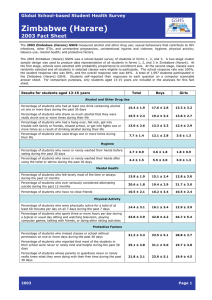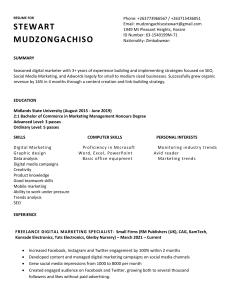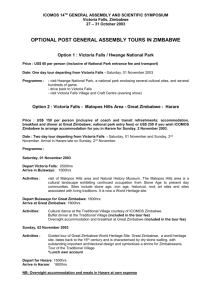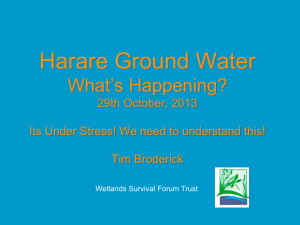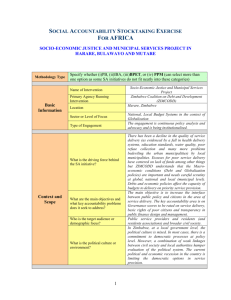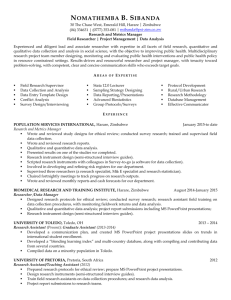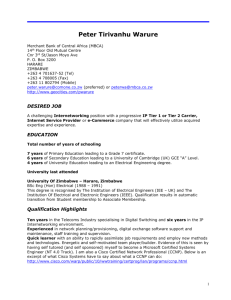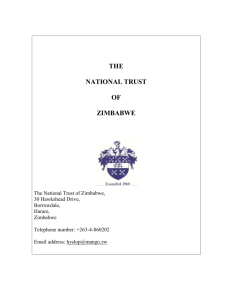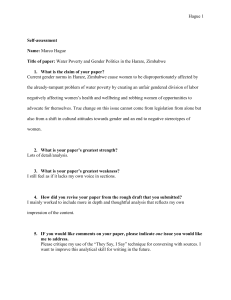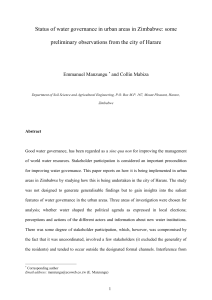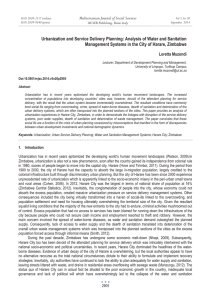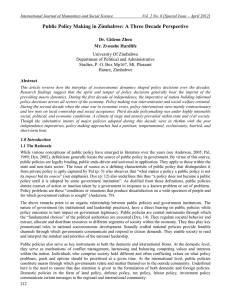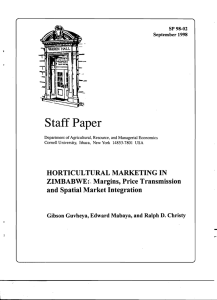Abs urb runoff WQ fi..
advertisement
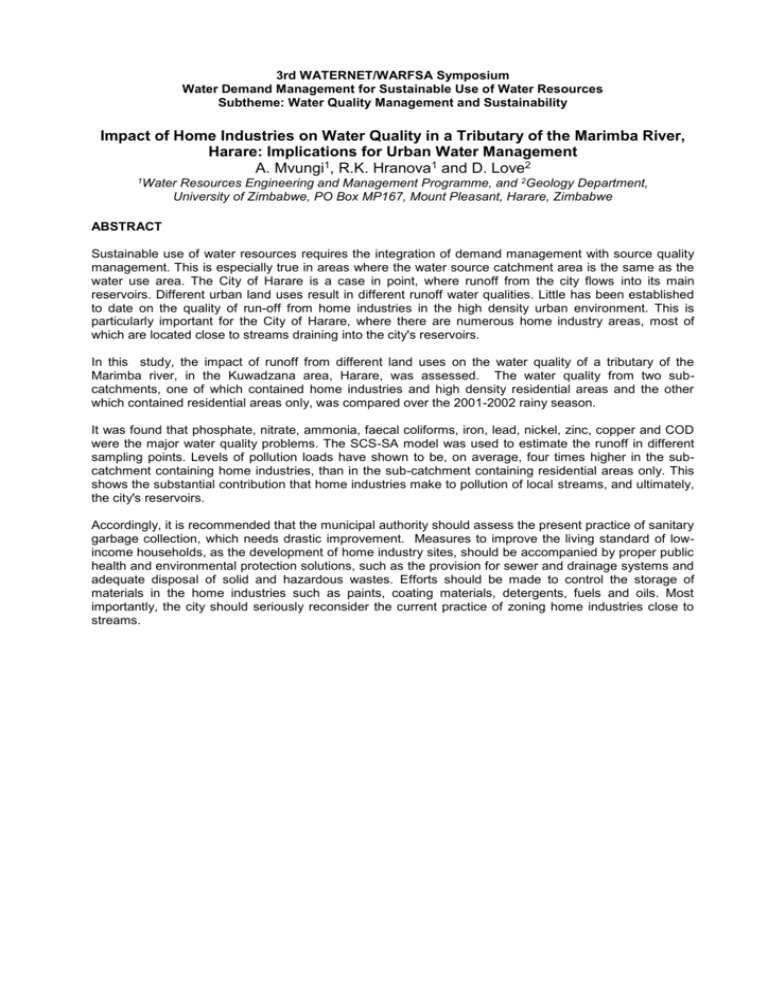
3rd WATERNET/WARFSA Symposium Water Demand Management for Sustainable Use of Water Resources Subtheme: Water Quality Management and Sustainability Impact of Home Industries on Water Quality in a Tributary of the Marimba River, Harare: Implications for Urban Water Management A. Mvungi1, R.K. Hranova1 and D. Love2 1Water Resources Engineering and Management Programme, and 2Geology Department, University of Zimbabwe, PO Box MP167, Mount Pleasant, Harare, Zimbabwe ABSTRACT Sustainable use of water resources requires the integration of demand management with source quality management. This is especially true in areas where the water source catchment area is the same as the water use area. The City of Harare is a case in point, where runoff from the city flows into its main reservoirs. Different urban land uses result in different runoff water qualities. Little has been established to date on the quality of run-off from home industries in the high density urban environment. This is particularly important for the City of Harare, where there are numerous home industry areas, most of which are located close to streams draining into the city's reservoirs. In this study, the impact of runoff from different land uses on the water quality of a tributary of the Marimba river, in the Kuwadzana area, Harare, was assessed. The water quality from two subcatchments, one of which contained home industries and high density residential areas and the other which contained residential areas only, was compared over the 2001-2002 rainy season. It was found that phosphate, nitrate, ammonia, faecal coliforms, iron, lead, nickel, zinc, copper and COD were the major water quality problems. The SCS-SA model was used to estimate the runoff in different sampling points. Levels of pollution loads have shown to be, on average, four times higher in the subcatchment containing home industries, than in the sub-catchment containing residential areas only. This shows the substantial contribution that home industries make to pollution of local streams, and ultimately, the city's reservoirs. Accordingly, it is recommended that the municipal authority should assess the present practice of sanitary garbage collection, which needs drastic improvement. Measures to improve the living standard of lowincome households, as the development of home industry sites, should be accompanied by proper public health and environmental protection solutions, such as the provision for sewer and drainage systems and adequate disposal of solid and hazardous wastes. Efforts should be made to control the storage of materials in the home industries such as paints, coating materials, detergents, fuels and oils. Most importantly, the city should seriously reconsider the current practice of zoning home industries close to streams.
